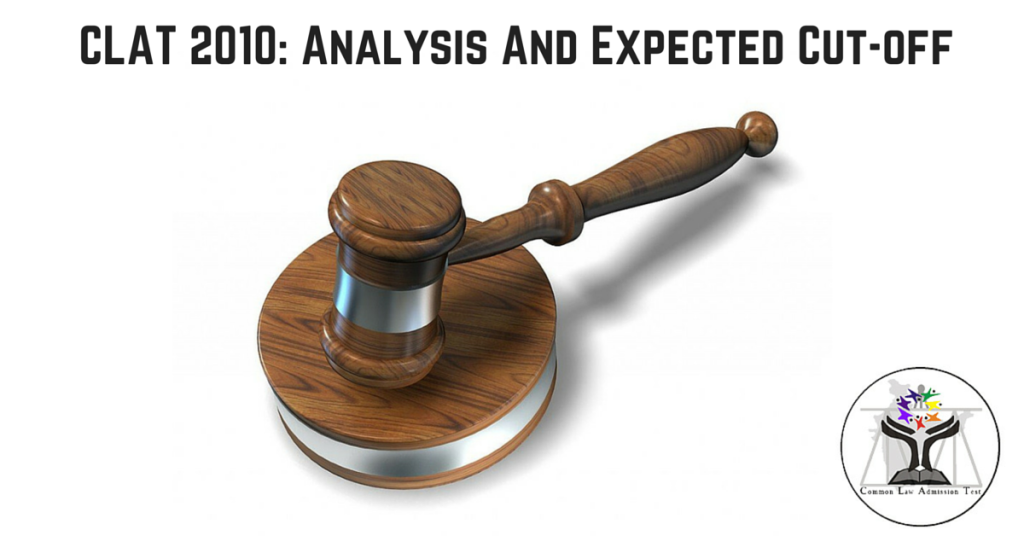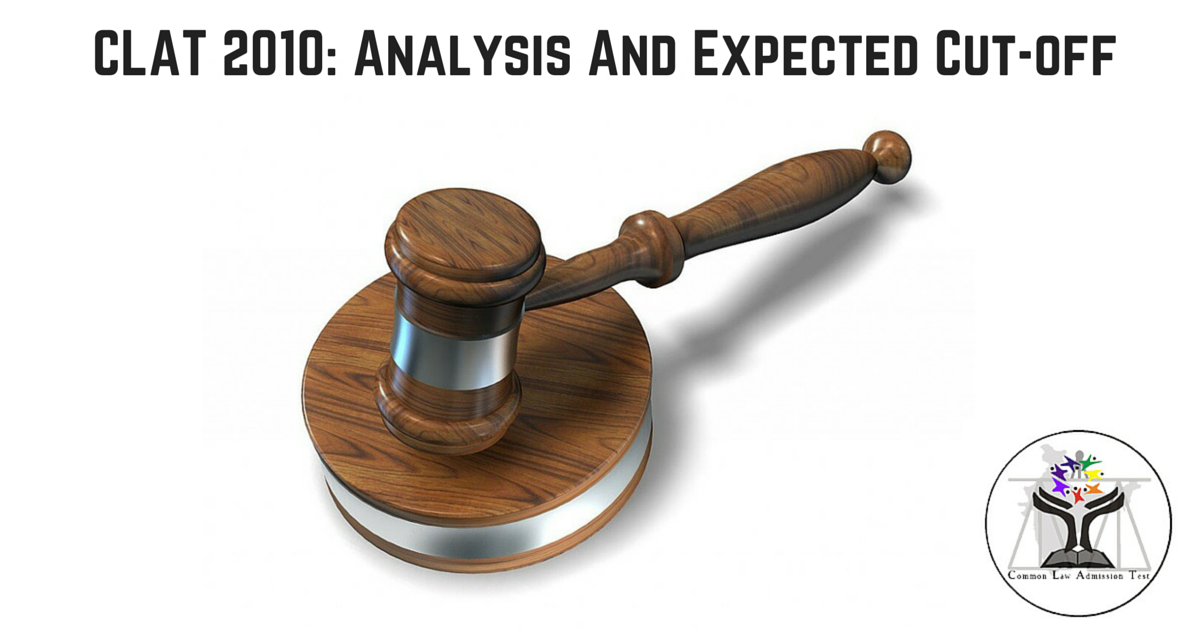 CLAT 2010 paper was mostly predictable (some recent observations can be read here), a little unpredictable on some counts too. Like I have maintained all along, English and Maths sections were really easy. Logical reasoning was mostly easy, except for the critical reasoning questions (strong/weak arguments, premises-inferences and so on) which are always tricky, and Legal Aptitude had GK type questions which tested knowledge of law. The majority of my students rated GK and Legal Aptitude (which we can call legal GK, mostly concepts) as tough. Before a detailed analysis of each section, here are the general aspects of the paper:
CLAT 2010 paper was mostly predictable (some recent observations can be read here), a little unpredictable on some counts too. Like I have maintained all along, English and Maths sections were really easy. Logical reasoning was mostly easy, except for the critical reasoning questions (strong/weak arguments, premises-inferences and so on) which are always tricky, and Legal Aptitude had GK type questions which tested knowledge of law. The majority of my students rated GK and Legal Aptitude (which we can call legal GK, mostly concepts) as tough. Before a detailed analysis of each section, here are the general aspects of the paper:
There was no time constraint as there were 90 GK or GK type questions (including legal aptitude) out of total 200 questions
Legal Reasoning was shifted to logical reasoning, only 5 questions for 1 mark each.
Most people could finish the paper at leisure, so what mattered is whether you knew the right answer or not.
Unlike last years paper, questions were original. So no one studying a particular book or at a particular coaching will benefit in an unfair manner.
Overall, a paper was easy. Tested knowledge more than an aptitude for reasoning.Those who prepared for a long time and worked hard will benefit from this paper. Nevertheless, those who prepared for a month also have a decent chance as GK and Legal GK did not give the huge lead to those who prepared for these topics for a long time as they had expected.
Out of those who prepared well and found the paper mostly easy, those who made lesser mistakes will go to the top-ranked law schools.
Don’t worry about the off-beat GK questions. All students were caught unprepared, and I can understand why. Even quiz masters don’t ask about the birth year of Gautam Buddha anymore. What would matter is how you fared in the rest of the paper.
You can see some of the questions here, posted by Dipti. Add any other questions that you can remember so that we have a better idea about the complete paper and maybe I’d be able to predict the cut-offs more specifically than.
- English: No tough vocabulary, as predicted. Spelling, grammar-based fill in the blanks, idioms, para jumbles, even direct identification of parts of speech. There were 10 questions on comprehension. Most basic preparation would suffice for this section. Even students from vernacular mediums will have a fair chance if they prepare over the long term for this paper. A good score would be 35. Scoring 40 was possible as time was not an issue. Not much different from CLAT 2009 that way.
- Maths: Most basic. Continued the trend since last year. Some students said it was easier than last year, (I don’t know how that can be possible!) and I am afraid the majority will score 20 out of 20. Just pray that you didn’t make silly mistakes.
- Logical Reasoning: I expected a bit tougher logical questions, especially from analytical reasoning, puzzles type questions. While these questions turned up, they were simple. The standard was raised in the critical reasoning questions, and the general impression is that this was an easy section. Legal reasoning was also asked, but these questions were a bit on the tougher side. Criminal law (theft/ abatement), Torts, Family law principles turned up. 30 will keep you in the competition, 40 will be a very good score.
- GK: This section was difficult to score in, but that is how GK section is supposed to be. If you are getting 30 correct here, that’s awesome. Current affairs were neglected in favour of static GK. Those who read Pearson or similar books would have benefited. I also hope you kept an eye on the GK section that comes in Pratiyogita Kiran or Pratiyogita Darpan which I have been advising from the beginning of the year.
- Legal Aptitude: This surprised most students. Most questions were conceptual questions, needed knowledge of the law. Basic Reading Materials/Modules certainly helped – and this is where those who went to coachings will clearly benefit. Questions came from a range of legal subjects, including the obvious ones like torts, contracts, criminal law, family law to more unusual subjects, like intellectual property law, environmental law, taxation, forensic sciences. If you read those last minute supplements I wrote for IMS (was available on a myIMS section of the website), you must have been thanking me. Same for those who read this article here on CLAThacker. Trivia on the law was not asked. No case law was asked, which is welcome and in line with what I have been telling my readers. With a good preparation, scoring 30 was possible, and with good guessing it can go up to 37-38 for some people.
Expected Cut-off:
This was a paper in which the highest score is easier to guess than the cut -off for the top three colleges. I am expecting the highest score in the range of 160-165. However, You can hope for getting top three law schools with any score slightly above 140. To feel absolutely safe about getting NLS Bangalore, I would want to score 150 on this paper.
 Serato DJ Crack 2025Serato DJ PRO Crack
Serato DJ Crack 2025Serato DJ PRO Crack









 Allow notifications
Allow notifications



